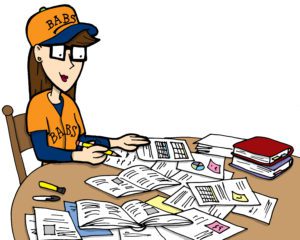Final Mail Run
 This is the final mail run of the 2020 draft prep season. If you have further questions, the Reader Forums will remain open for awhile longer.
This is the final mail run of the 2020 draft prep season. If you have further questions, the Reader Forums will remain open for awhile longer.
I’m curious as to how much of a role spring training performances affect the BABS evaluations. I would expect that there will be some changes from the previous update. With so many players facing opponents that will be in the minor leagues, how do you factor all of that into your equations?
In short, we don’t. The primary changes in each BABS update affect playing time and risk factors only. You’ll note how Justin Verlander’s PT and injury rating has changed with this update but his skills ratings remain the same, even if it is possible that he won’t be 100 percent when he returns. The numbers posted by players who’ve had particularly hot or cold springs rarely carry over into the regular season; what often changes is their playing time expectation and BABS does adjust that. The uncertainty surrounding the delay to the start of the season further complicates things. That’s discussed here.
I see Trea Turner is above guys like Soto, Acuna and Story, all of whom appear to check off more boxes than Turner (nothing in Pw on BABS). What has Turner, who also comes with an injury designation, higher than those guys? I’m in an NL-Only league with the sixth pick so Turner is likely to be in the conversation for me.
Extreme speed in the current SB-scarce environment in tandem with significant batting average upside trumps most power metrics. Power is plentiful and can be found everywhere. The injury designation is there for your decision-making and risk budget, but it does not figure into the overall rank.
I participate in NFBC 50 man roster draft and hold leagues. How do you handle player picks in the mid to late reserve rounds? In a 15 team league, when you get to rounds 35 – 50, most of the players have liabilities, especially starting pitchers.
The risk budget is intended mostly for your active roster. Often the reason for players being rated outside the top 25 rounds is exactly because they carry excess risk. So once you get into the middle rounds, your focus should be on asset maximization. Be aware of the liabilities you are putting on your roster — opt for minor injury over major injury risk if you can — but it will be nearly impossible to avoid all risk. In the later rounds of these deep leagues, high risk-high reward players can be very valuable. While the error bars are wide, the upside could yield great profit.
When dealing with the injured star players (Clevinger, Sale, Stanton, Judge, Verlander, etc.), at what point should they be drafted in a draft today? I am in a slow draft where Clevinger fell to 65 and Judge to 125 – do the rewards outweigh the risks at this point? 10 team mixed league (BABS league) so there are plenty of short term replacements available.
Much depends on your roster construction – if you have a low risk core already in place, then you can shoulder the risk of one of these players. In the end, it’s a personal decision, but knowing that you have a risk budget can help. My approach is conservative with foundation players. I like to leave my risk towards the lower end of the draft. There are so many players out there, why take a chance? My favorite advice comes from Scott Pianowski of Yahoo! Sports — “Why invite injuries onto your roster? They will find you on their own.”
